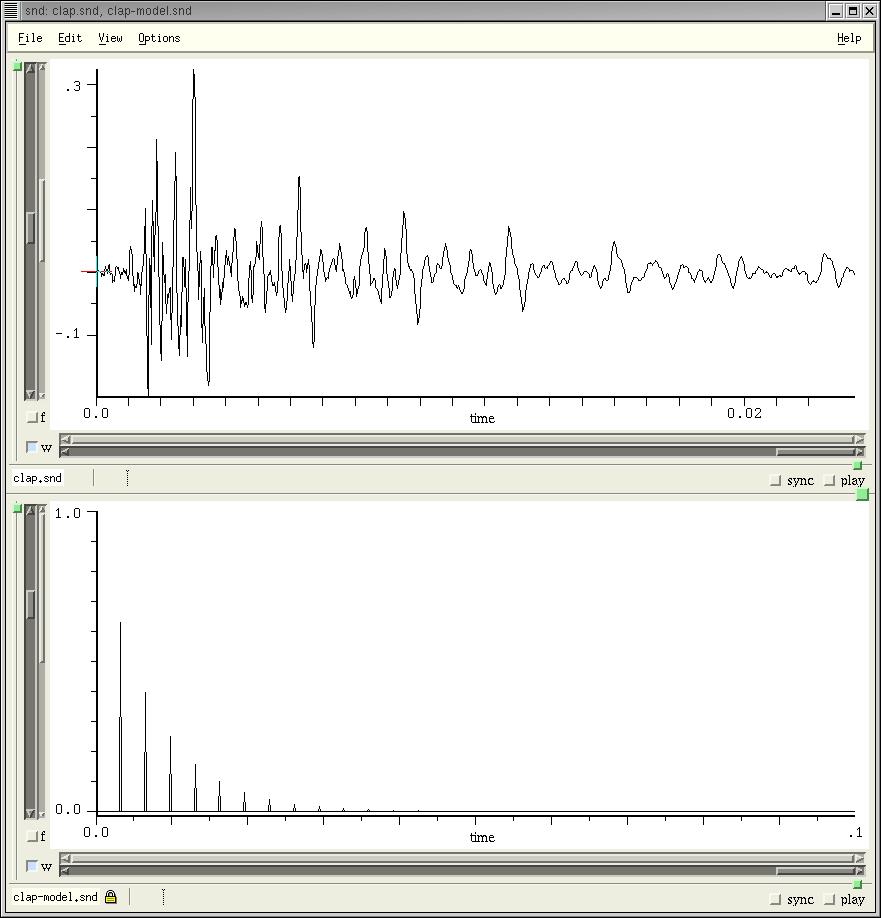
The waveforms for the impulse chosen to be modeled (which happens to be a clap) and the model of the impulse can be seen below. Yeah, I probably should've chosen a better impulse with which to work.

The impulse was modeled with a single click (of an amplitude of 1) and a series of echoes of this click with a period of 0.003265 s (which corresponds to the period measured above) and an attenuation factor of 0.63. This attenuation factor was derived by estimating the height of each maximum peak in each period of the original impulse, calculating the attenuation for each successive pair of these, and determining the average of these attenuations. The model, not surprisingly, sounds more clicklike, but it sounds like it is of the same pitch class as the original; it may or may not be off by an octave. Click here to listen to the clap and here to listen to its model.
The Scheme code that generated the model of the impulse is shown below.
(define echo ; IIR version, aka
feed-back or recursive delay
(lambda* (secs #&optional
(att 1.0))
(let ((del (make-delay
(round (* secs (srate)))))
(yz 0.0)
; use yd, i.e., send output to delay
(y0 0.0))
(lambda
(x0)
(set! yz (tap del))
; where it comes back from delayline
(set! y0 (+ x0 (* att yz)))
(delay del y0)
; feed into delayline
y0)
)))
(map-chan (echo .003265 .63)